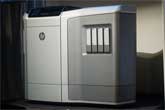| |
|
| |
|
 |
Supply
Chain by the Numbers |
| |
|
| |
- Oct. 30, 2014 -
|
| |
|
| |
|
| |
|
| |
HP 3D Printing Breakthrough? China May be Creating its Own Robot Bubble; US Truckload Rates Continue to Soar; Goldman Sachs Says Oil Prices to Keep Falling |
| |
|
| |
| |
| |
10 |

|
|
|
| |
| |
|
$70
|
|
Price to which US crude oil prices (West Texas Intermediate) are headed by Q2 2015, according to a new forecast this week by Goldman Sachs. The price for Brent crude will also fall to $80, the report predicted. Currently, WTI is about $81 per barrel, and Brent is at $86. Goldman expects both prices to drop a bit through Q1, to $75 and $85 per barrel respectively, then fall further in the typically soft second quarter. All this is of course good news for shippers, as diesel fuel prices are hitting their lowest levels since 2011, bunker fuel costs are down 25% from June, etc., but some say the dropping prices might curtail development of US oil, as prices fall below production costs.
|
| |
| |
|
| |
| |
6.7% |
|
Amount by which the Cass Information Systems Linehaul Index was up in September year over year, making it seven straights months this measure, which measures per mile truckload rates, has been up 5% or more compared with 2013. The numbers starting in March through September: 6.0%, 5.7%, 5.8%, 5.2%, 7.2%, 7.0% and now 6.7% last month. The index was up 2.4% in September over August, which is quite a jump month over month, as carriers are in the driver seat, pardon the pun, when it comes to supply and demand. Noted Avondale Partners: "We are not surprised to see our index continue to post mid-to-high single digit gains, and we expect this to continue through 4Q. We continue to expect contract TL pricing to rise 4-6% in 2014, with the higher end looking increasingly likely."
|
| |
| |
|
|
|
| |
 |
 |
| |
|
|
| |